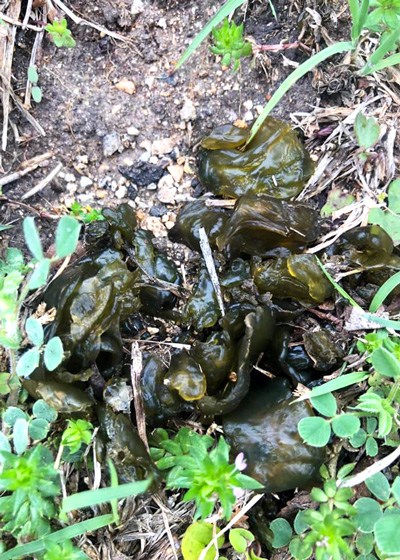Questions of the Week – March 19, 2020: Second Pair
Neither of these rises to the level of an FAQ, but both are questions that fascinate readers. I’ve been asked about each several times recently, so I thought I’d share them with you here.

1.“What are these things all over my holly ferns?”
These are spores. They are to ferns what seeds are to higher plants. In fact, when you see a plant that’s this covered with them, you know that’s a happy plant. You’re doing something right.
In the right conditions of an organic growing medium such as compost or leaf humus or even soft tree bark, and in conditions of continuously high humidity, these will go through their life cycles to grow into small plants hanging from their supports. I’ve seen them all over tree trunks in the Hoh Rainforest in Western Washington, and I’ve seen them clinging to old brick in the French Quarter in New Orleans.
In this case, these spores are on the back of a holly fern leaflet as it came into a nursery from a wholesale grower. Some people might think this is an outbreak of insect or disease, but it’s absolutely normal and no cause for concern. And no, you probably won’t end up with thousands of little holly ferns sprouting up all over your yard.

2. “What is this nasty mess growing in my lawn?”
That’s Nostoc. Nice name!
It’s green, and it’s jelly-like, but no thanks on that jelly on my toast. It’s a cyanobacterium that grows on the surface of lawns, flowerbeds, bare ground, walks and driveways. It’s ugly to look at and very slippery/dangerous to step on. You really don’t want it around.
Nostoc as a living organism is 3.5 billion years old. Most of the questions I get about it follow periods of rainy weather like we’ve been having recently, which is probably why this photo got put up on my Facebook page a few days ago.
Here is a really good, albeit short, write-up on Nostoc done by Extension Specialist Diane Brown of Michigan State University three years ago. Take special note of all its benefits in the final paragraph.
